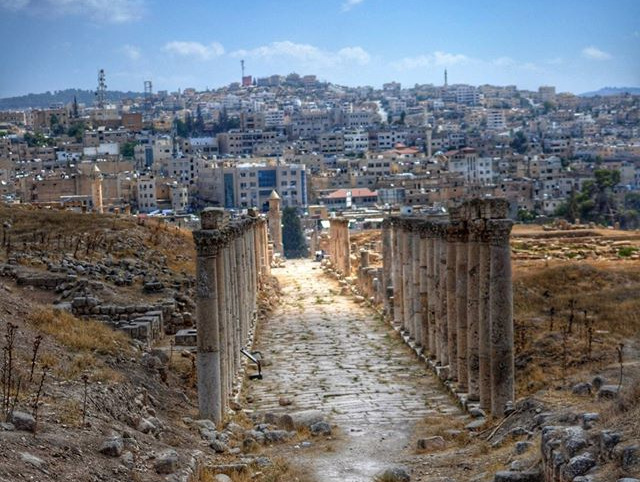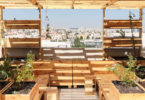We love exploring new cities in Jordan! The city of Jerash, located about 50 kilometers north of the capital Amman, and only 45km south of the Syrian border, is home to what is now generally acknowledge to be some the best persevered Roman ruins outside of Italy. The ruins that once upon a time fell to a blanket of sand are now a sight to behold.
A little bit of history…
Even though it had been settled earlier, Jerash first became an important town in the third century BC under the rule of Alexander the Great.
When the Romans conquered Syria in 64BC, Gerasa, as it was known then, became one of the ten great Decapolis cities belonging to the Greek- Roman federation. Great economic benefits were bought to the city mainly through trade with the Nabataeans from Petra.
Prosperity peaked in the third century. At this time it was a Roman colony of 20,000 people but in the following centuries trade routes changed, shipping became more important and the town started to decline.
The Persian invasion of 414AD, the Muslin invasion of 636AD and earthquakes of 749AD all added to this and the city shrank to a quarter of its size.
There was a brief occupation by the Crusaders in the 12th century but the city remained deserted until it wasrediscovered in 1806 by German traveller Ulrich Jasper Seetzen.
Excavation of this ancient city began in 1925 and continues to this day.
Arriving in the modern town of Jerash today, with its provincial streets and small market gardens, there’s little to suggest its illustrious past. But the moment you cross from the new town into the ancient city boundaries, marked by the imposing Hadrian’s Arch, it becomes immediately apparent that this was once no ordinary backwater but a city of great wealth and importance. And how did Jerash, which was never on a major trade route, come to be so important? The answer lies in the soil. Whatever route you take to reach the town, and at whatever time of year, you will pass the ubiquitous fruit stalls that characterise the area. Figs, apples, plums, berries, and most especially olives all grow prodigiously in the surrounding hillsides, and the surplus of crops helps the local farming communities to prosper just as in ancient times.
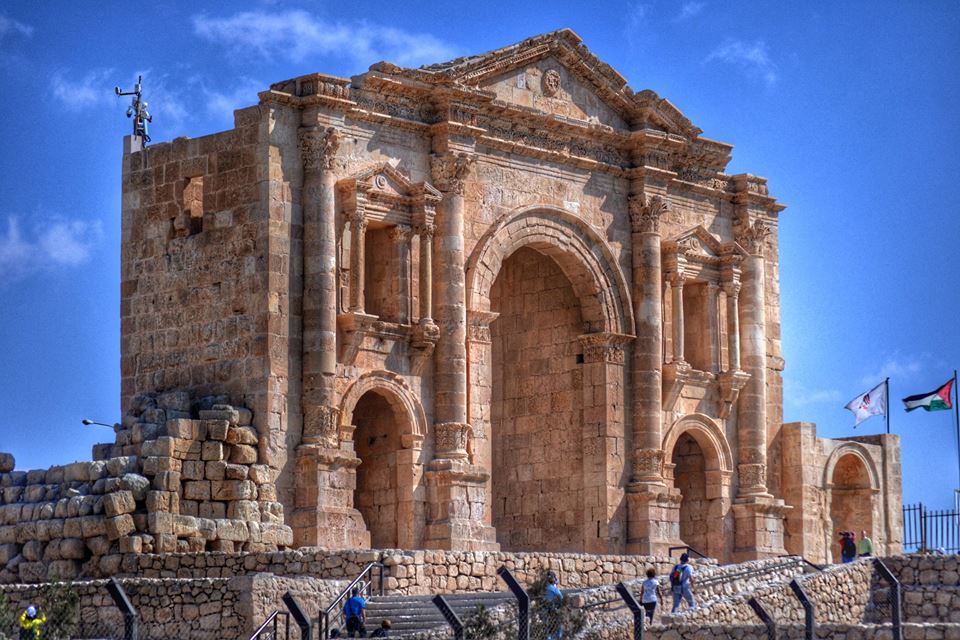
Being close to the entrance, Hadrian’s Arch is the perfect introduction to Jerash. The arch was built in commemoration of Emperor Hadrian’s visit in 129AD. Decorated with carved acanthus leaves on the capitals, it was originally twice the height and had three wooden doors.
Jerash is cleaved in two by a deep and cultivated wadi. Today, as in the days of the Romans, the bulk of the town’s inhabitants live on the eastern side of the wadi. The walled city on the west side of the wadi, graced with grand public monuments, baths and fountains, was reserved for administrative, commercial, civic and religious activities. The two were once linked by causeways and processional paths and magnificent gates marked the entrance. Access to the remains of this walled city today is through the most southerly gate, known as Hadrian’s Gate or the Arch of Triumph. (See photo above.)
While there are certainly other surviving Roman cities that boast similar architectural treasures, the ancient ruins at Jerash are famous for their remarkable state of preservation. Enough structures remain intact for archaeologists and historians, and even the casual visitor, to piece together ancient life under the rule of an emperor.
Having visited the ruins in Rome and Pompeii during my childhood made our day in Jerash seem all the more impressive. This entire immense city was hidden for centuries beneath the sand before archaeologists excavated and restored it over the last 70 years. People seem to think that more than 50% of the city is still waiting for funding to be uncovered!
It was amazing to walk the cobblestone paths of the oval Forum where massive public gatherings were once held, and the Hippodrome, where up to 15,000 assembled to watch chariot races and fierce gladiatorial battles. You could almost feel the history in every step.
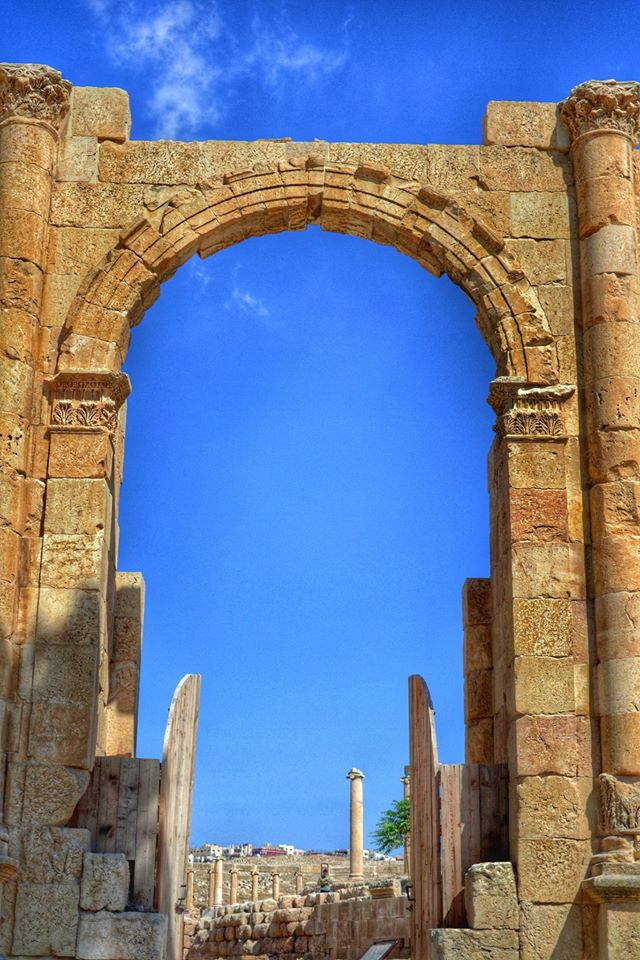
Keep your ticket as you may need to show it at the South Gate. One of the four original entrances, it is from here that you first start to see Jerash’s columns appear.
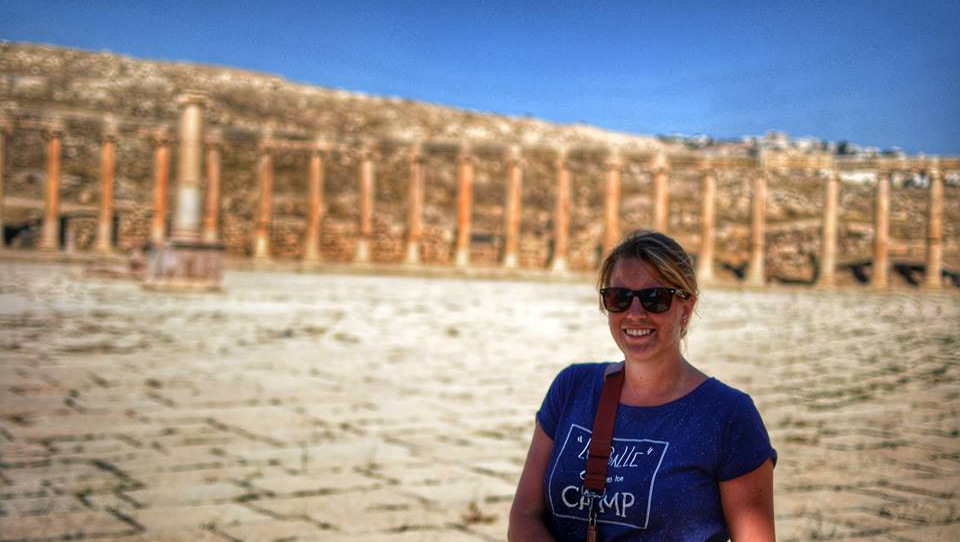
A few of the 56 pillars surrounding the plaza of the Forum
The Forum was, for me, one of the highlights of Jerash. The oval shaped plaza is surrounded by 56 columns, each made from four blocks of stone. Limestone slabs pave the plaza, increasing in size from the centre. Lying between the Temple of Zeus and the main thoroughfare, Cardo Maximus, it is easy to see why it was the centre of the social and political life. The best view is from the steps of the Temple of Zeus behind you.
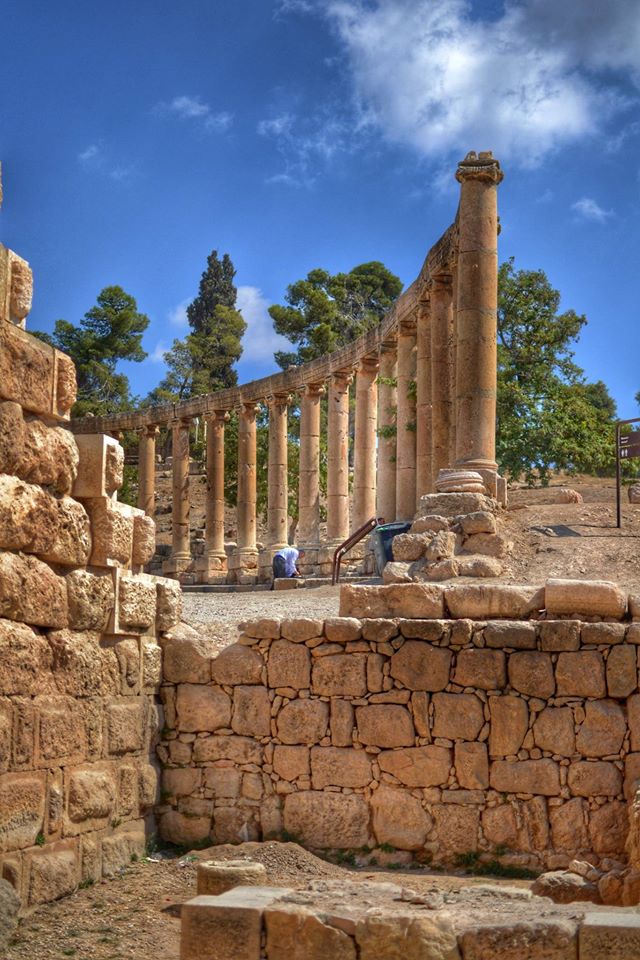
From the Forum, the colonnaded main street, the Cardo Maximus leads you through the centre of the town. The paving is original…you can still see the ruts caused but by the chariot wheels.
On either side of the road, remnants of history lie. Crumbling pillars, column blocks and capitals wait like jigsaw pieces to be put back together again.
Guides jump up as you pass, wanting to show you how the pillars move and help you discover the hollow sound of the rocks.
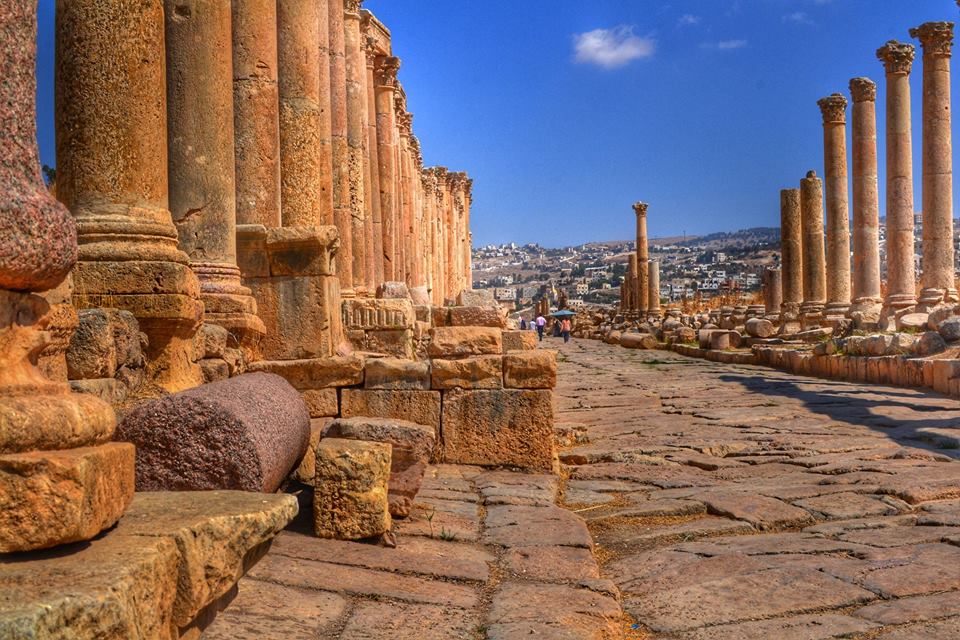
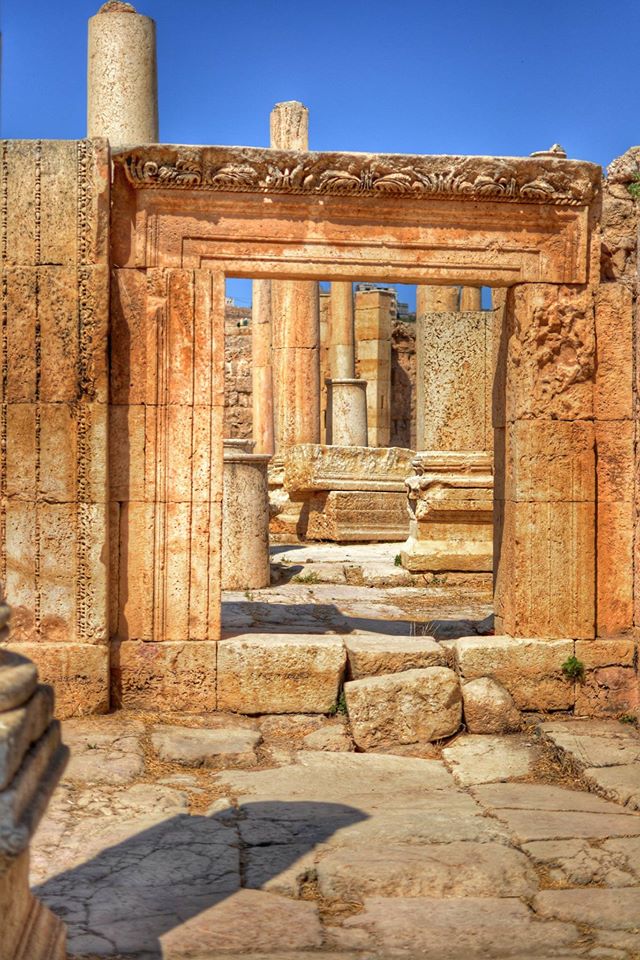
Framed windows
One of the more complete buildings on the road is the Nymphaenum…. the main fountain for the city which is dedicated to the water nymphs. Water used to cascade over the facade and into a large pool at the bottom. It must have been an amazing sight. At the foot of the structure the pink granite water base is still in one piece.

Next door to Nymphaenium is the Cathedral. There is no cathedral, only a Byzantine church rebuilt in the 4th century over the original 2nd century, gateway to the Temple of Dionuysus. During the 4th and 5th centuries, Christianity became a major religion and many churches were constructed. Pagan temples were permitted to be dismantled, as happened here, and many of the pieces were used to build new churches.

The North Gate. Yes, you must wander up the hill, for here you will find one of the two amphitheaters in Jerash. It had been destroyed by earthquakes and dismantled for other projects but what you now see is the result of years of restoration.
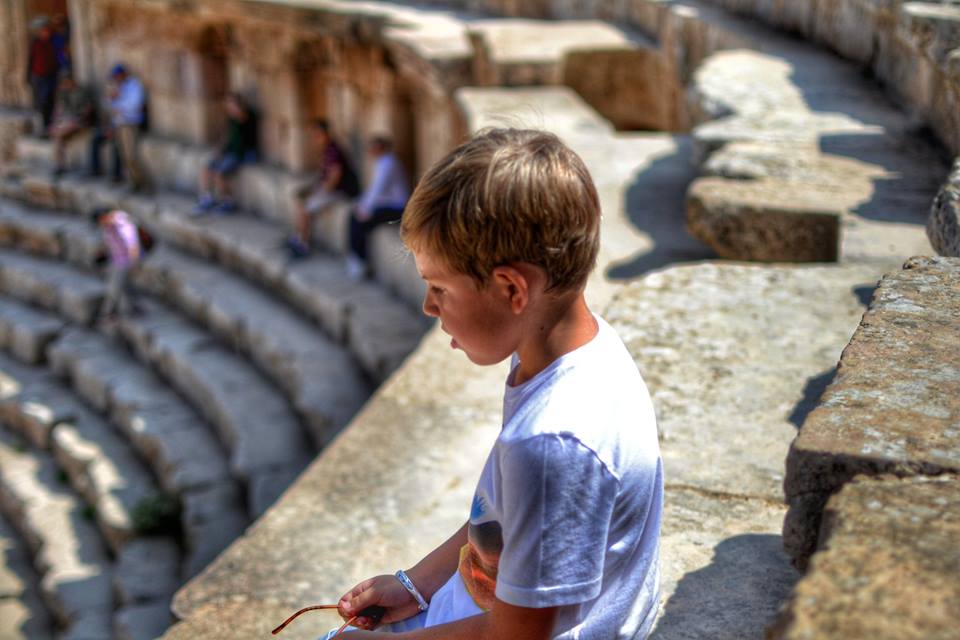
Next, The Temple of Artemis which was built between 150AD and 170AD. It is dedicated to Artemis, the goddess of hunting and fertility. Eleven of the original twelve Corinthian columns are still standing, all topped by capitals decorated with acanthus leaves. The temple can also be reached from the main thoroughfare.
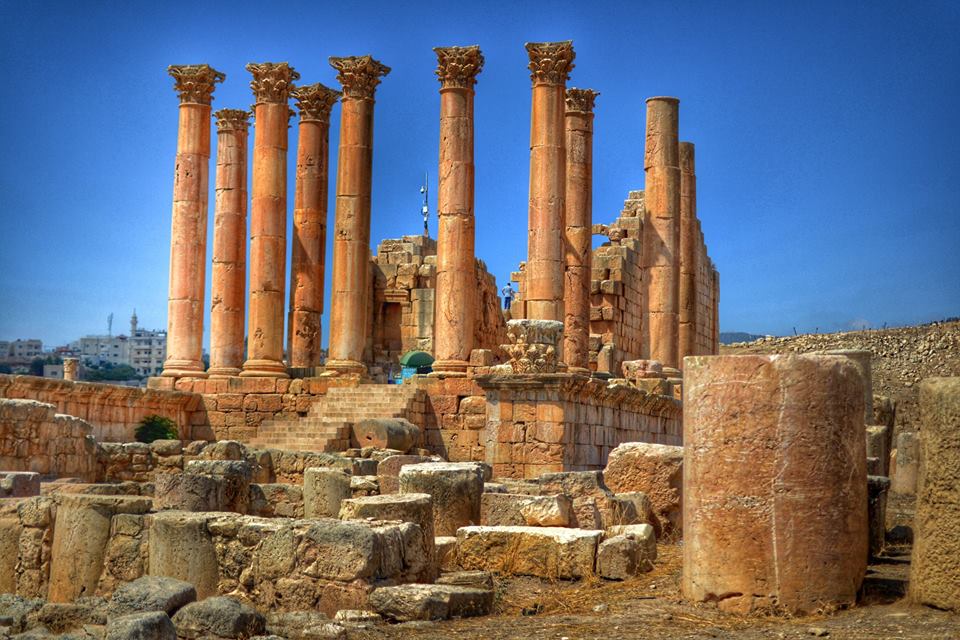
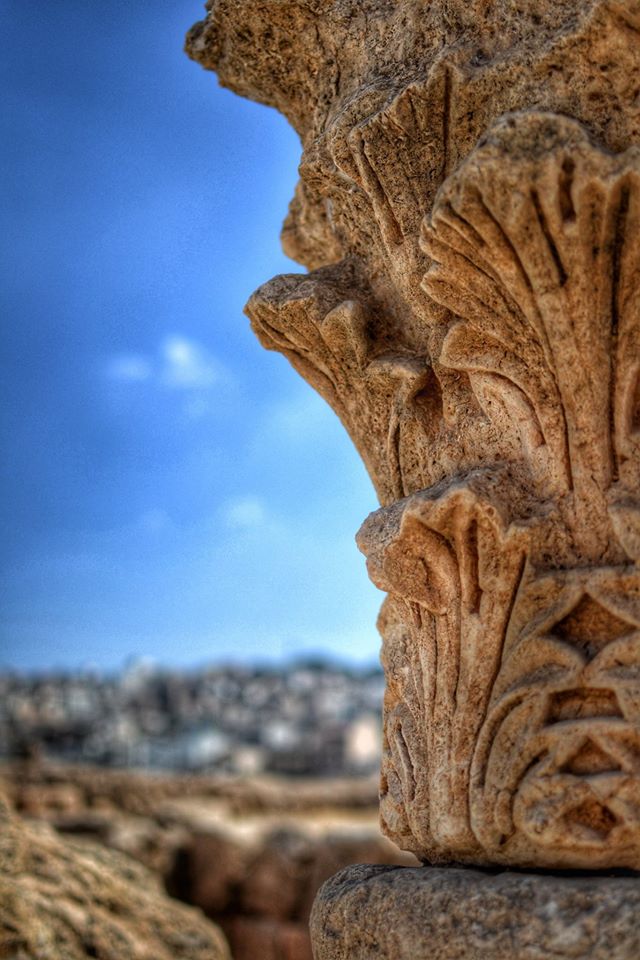
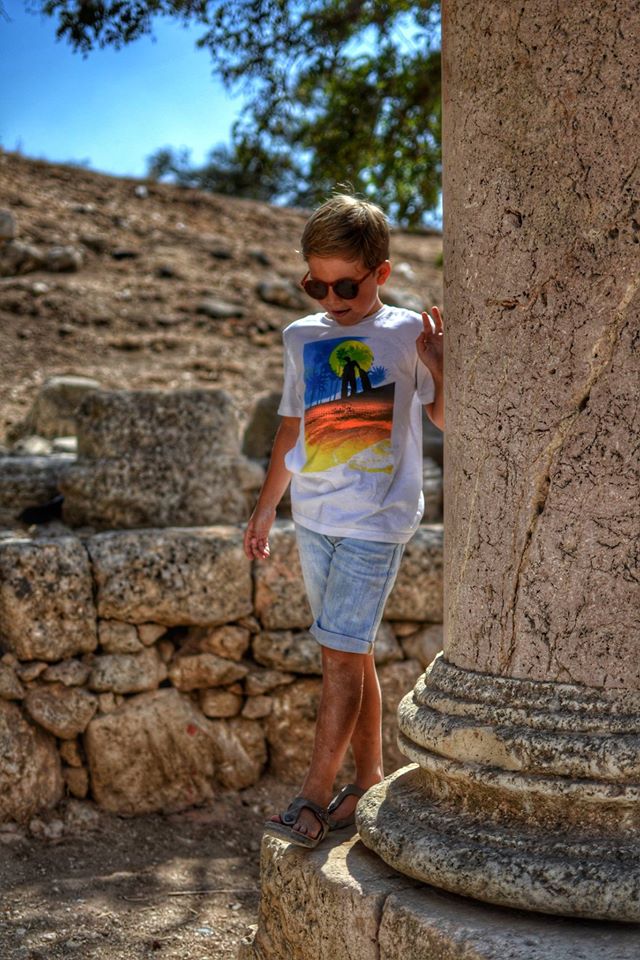
The last must see we visited is the Temple of Zeus. Built in 162 AD over an earlier Roman temple, it looks over the entire city. The views are magnificent..over the Forum and down the Cardo maximus thoroughfare to the North Gate. (Unfortunately I forgot to take a photo but you can see it in the far back.)
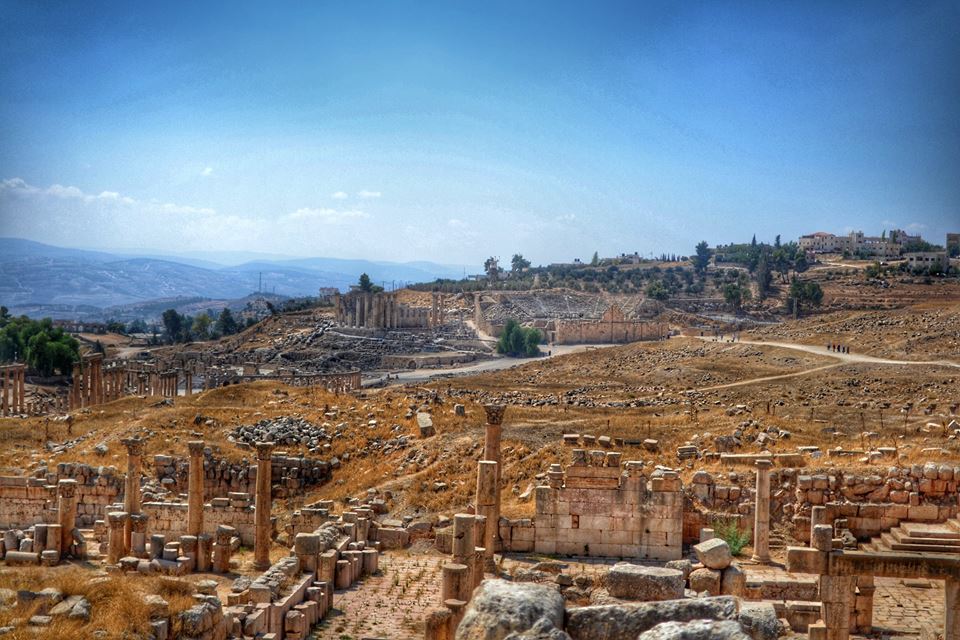

Exploring with Alexander

Jerash was an amazing experience, one not to be missed! Walking around the ruins you are treated to glimpses of life from over 2000 years ago…
The site covers a large area, so bring your walking shoes. You have a two to three hour walk ahead of you!
If you have any questions about living in Amman or our day in Jerash, feel free to contact me!
[Alexander wearing a T-shirt by GAP Kids, shorts by Louis Louise, Birkenstocks and sunglasses by Rainbow & Snow via Orange Mayonnaise.]

